Examining Final Fantasy VII’s Remake and Rebirth: A Living Legacy
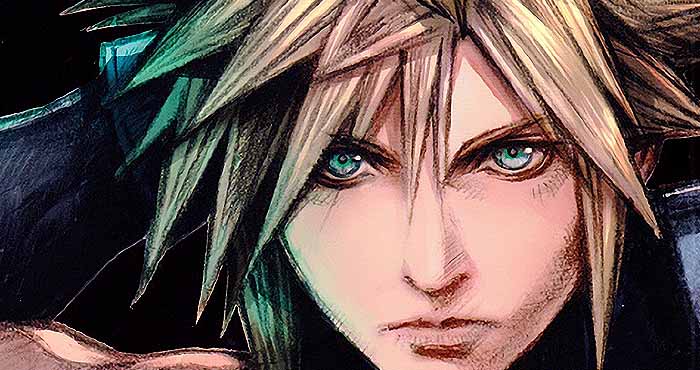
Final Fantasy is a long running Japanese Role-Playing Game series that started in 1987 in Japan by Hironobu Sakaguchi and has carried onto the present day, with its sixteenth installment being released in 2023. The series started when 2D graphics and pixel art was used to convey characters and story in games and has continued into the age where some games are starting to use ray tracing to give 3D graphics a realistic look. That said, the first Final Fantasy installment to receive the 3D treatment was Final Fantasy VII, released in 1997. Final Fantasy VII received the remake treatment, with Final Fantasy VII: Remake‘s release in 2020, and Final Fantasy VII: Rebirth‘s release in 2024. 1
This article will give a breakdown of how the original Final Fantasy VII compilation was created and its reception before moving onto an examination of the current retelling of Final Fantasy VII through the various mediums the remake uses to tell its story. There will be heavy spoilers for Final Fantasy VII for the original PlayStation, Final Fantasy VII Remake and Final Fantasy VII Rebirth below.
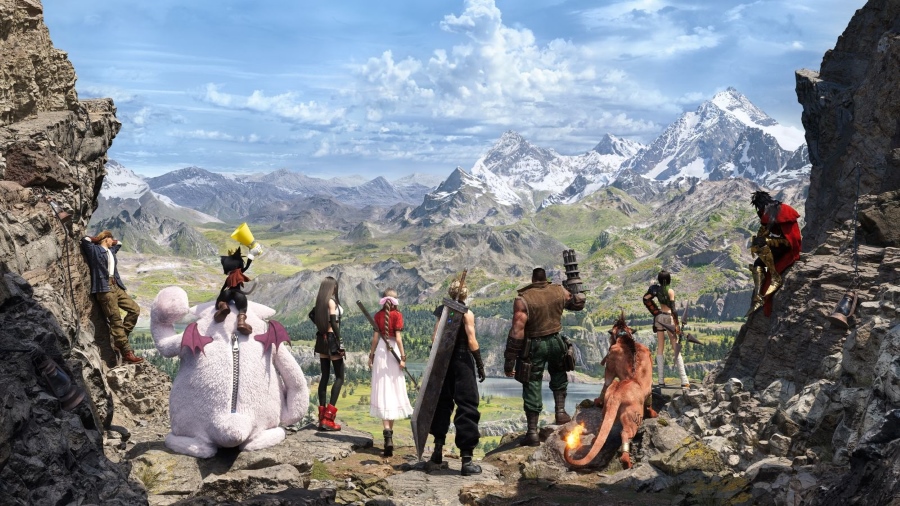
The Original Compilation Breakdown and Reception
The original Final Fantasy VII had more than just the game to enjoy. There was an entire compilation available to fans to better understand multiple facets of the story and characters Final Fantasy VII presented. This compilation included a movie in the form of Final Fantasy VII: Advent Children, a mobile game called Before Crisis, a PSP game called Crisis Core, two novels, On the Way to a Smile and The Kids are Alright: A Turks Side Story, and a PS2 game called Dirge of Cerberus. These all helped explain what led to the events of Final Fantasy VII, side stories that flesh out certain characters, like Aerith or the Turks, as well as what happened after the heroes saved the world.
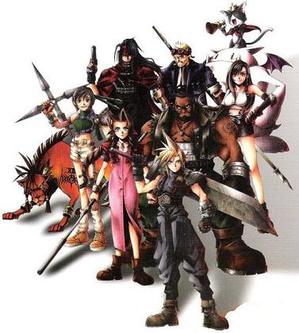
This original compilation was met with mixed reception. Many reviewers found the games to not be as polished as the original, and some felt the lore expansion in the compilation cheapened the story of Final Fantasy VII. One of the more positive aspects of the compilation was the movie Advent Children, as it received an 88/100 on Metacritic and sold over one million units in Japan and the US combined. The other positively received aspect of the compilation was Crisis Core, which had a 83/100 on Metacritic, and some of the game reviewers at the time felt that it was the first game to feel like the classic Final Fantasy VII without cheapening the experience of the orignal story. 3 Given the mixed reception of the original Final Fantasy VII‘s compilation, it should be asked how Final Fantasy VII: Remake has been handled. The analysis of the arguable new compilation of Final Fantasy VII will begin in the next section with Remake’s announcement.
Final Fantasy VII: Remake Announced
Fans had been supposedly wanting a remake of Final Fantasy VII with updated 3D graphics since a PS3 tech demo in 2005. 4 During E3 2015, Final Fantasy VII Remake was announced. Despite this announcement, fans would have to wait five years for Remake’s release. 5 Throughout this years long wait, fans speculated on what a remake would look like, or if Final Fantasy VII was actually going to be remade. Obviously, the development team had been working on refining their process and insights for how they wanted to proceed with remaking a game like Final Fantasy VII. These insights and processes will be detailed below.
The Development Team’s Process and Insights
The idea of a remake of Final Fantasy VII started in 2010, with both Testuya Nomura, who designed the characters for the original Final Fantasy VII, and Yoshinori Kitase expressing some desire to make a remake, though it was not the primary focus for Kitase. This eventually led to one of the people behind the marketing of the original Final Fantasy VII approaching Kitase and Nomura about seriously doing a remake. Part of what led to this decision was the time that had passed since the original released and the developers reaching an older age. Nomura was named as the director for this remake project, which he was not expecting, though he later passed directorship to Naoki Hamaguchi. 6
After becoming the director, Nomura decided that he wanted to bring the story of Final Fantasy VII into a more modern generation. He realized that simply updating the graphics would not achieve a good result with the audience. In addition to this, Nomura saw an opportunity to add in some of the aspects of the Compilation as a whole into the remake. The remake was announced in 2015, but released in 2020, as mentioned above. 7 For now, it is time to see what exactly the development team hoped to accomplish with Final Fantasy Remake before moving onto some of the other decisions that were made about the remake project as a whole, such as breaking the remake into a trilogy, for example.
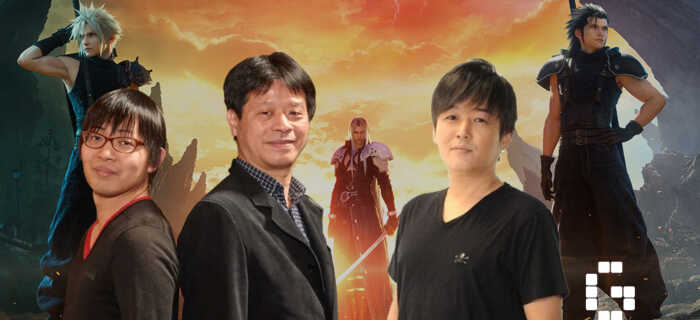
What They Hoped to Accomplish
From the outset, the development team seemed to know that the story of Final Fantasy VII into multiple parts. Furthermore, the development team understood that ways of thinking and being present in the world had changed since the original Final Fantasy VII, as stated earlier, but that the overall themes of the underdog story of a ragtag team trying their best to save the world against a massive evil force has a kind of timeless appeal. Since the development team already had these changes in attitudes in mind, they also saw it as an opportunity to set the remake project after the initial Compilation, so that they could interweave all the content that had previously had uncertain canonicity in the series where needed. By doing this, the developers sought to add depth to already familiar story beats while also bringing new ideas and creativity to Final Fantasy VII Remake. Furthermore, the developers are taking the spirit they had when developing the original Final Fantasy VII and are applying it to the Remake trilogy’s development process. The developers are all working together to create a vision of VII with nuance and respect for the original as well.
Following this notion, the developers also wanted to update some of the interactions between characters and environments. Specifically, Final Fantasy VII Remake has more overt LGBTQ+ themes, particularly seen when Cloud and Aerith go into the Honey Bee Inn. In addition to this, chemistry between characters is also more overt, and, unlike the original game, where Tifa and Aerith seemed to be at odds for Cloud’s affection, both women are openly attracted to him while still being friends with each other. 9 More on this specific dynamic will be covered with the details of Final Fantasy VII Rebirth, but it seems like the developers really hoped to update the story of Final Fantasy VII for a more modern audience, include depth to the story through including diverse themes, and tie in what had previously been loose threads of other stories in the Final Fantasy VII Compilation to tell a more complete story this time around. Next, the decision to split the Remake into a trilogy will be examined, as will the 35th Anniversary of Final Fantasy VII and its announcements, which help provide a foundation for how the legacy of Final Fantasy VII‘s Compilation continues from Remake into Rebirth.
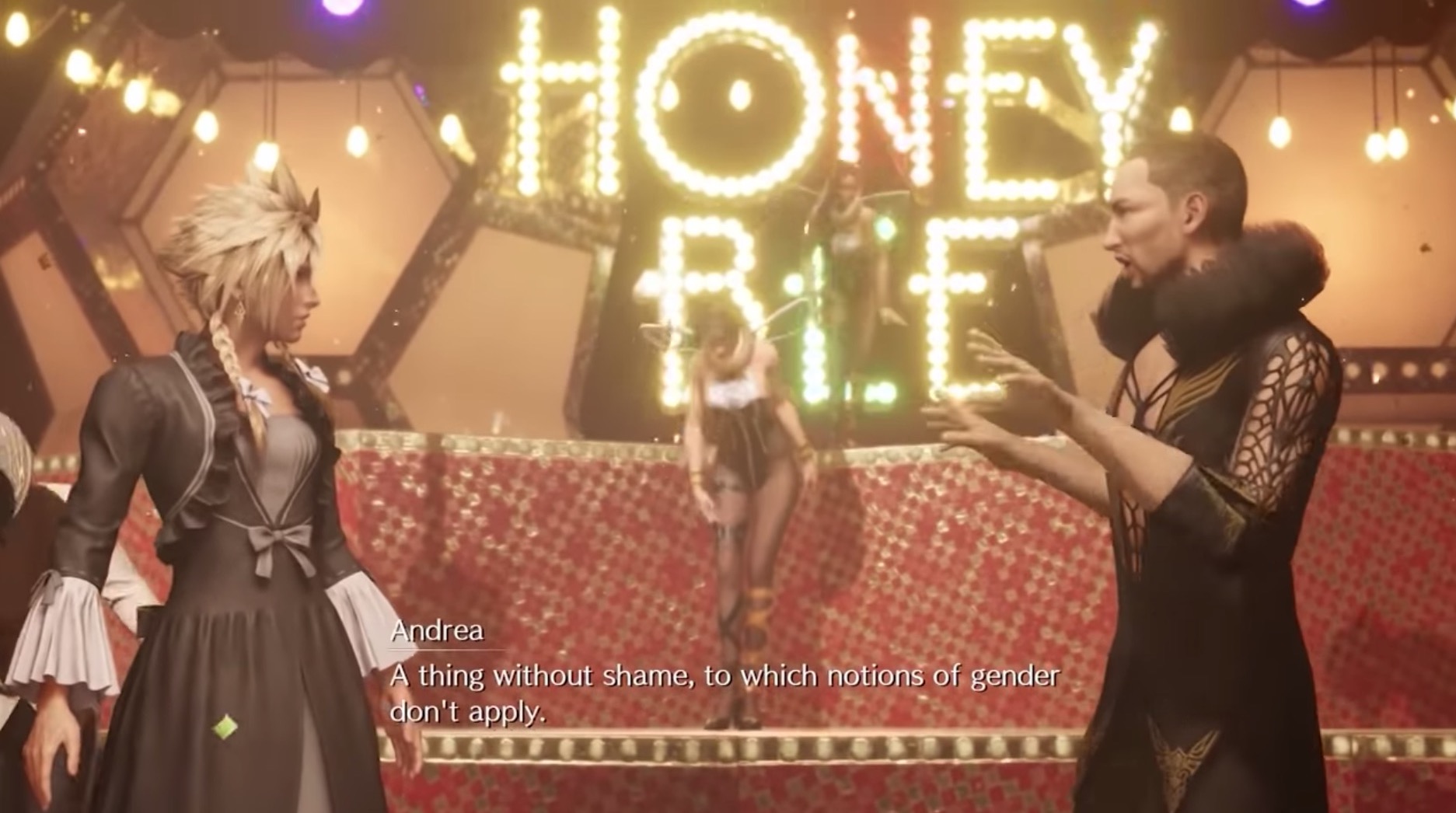
Splitting the Remake into a Trilogy
Since Remake only expanded on the original game’s opening area of Midgar, many people began to speculate how many parts the remake project would have when it finished. A popular theory was that the game would simply be split into two parts, so, the opening events at Midgar and then the rest of the events of the original game, which is something that even the developers explored. However, an announcement at the 25th anniversary event confirmed that the remake project would be a trilogy.
However, there were concerns about how to effectively tell the rest of the story in the second game, especially when the developers were adding depth, nuance, and new content to the entire remake. As it is, there have been concerns that the developers might expand it past three games. However, Nomura assured the audience that everything will be told in the third game and nothing important will be skipped over. 11 More specifics on the 25th anniversary celebration is covered below, along with other projects that can help people approach the compilation moving forward.
The 25th Anniversary of Final Fantasy VII Announcements
Some were expecting an announcement about the upcoming second part of the Final Fantasy VII remake at the 25th anniversary event. This event happened in the summer of 2022, and it delivered not only an initial trailer with a tentative release for the winter and name for the second part of the remake, but it also gave fans other ways to interact with the Final Fantasy VII world. Final Fantasy VII: Crisis Core: Reunion was announced as a remaster of the original for the PS4/PS5, Xbox consoles, and Nintendo Switch, since the original on the PSP can be difficult to access now. By updating the graphics to HD and reworking the gameplay a bit, people who were not able to play through the prequel to the original game could now experience the story of SOLDIER and Zack Fair for themselves. In addition to this, the now defunct mobile game The First SOLDIER received special skins and encounters for players. Furthermore, another mobile game, called Ever Crisis provided a way for fans of the Final Fantasy VII universe a way to experience the story of the original Final Fantasy VII, Crisis Core, and the story behind First SOLDIER, which details Sephiroth’s backstory from before the events in Crisis Core in one place. Of course, telling the tales of the original Final Fantasy VII and Crisis Core through mobile means that it is more episodic in nature. 12
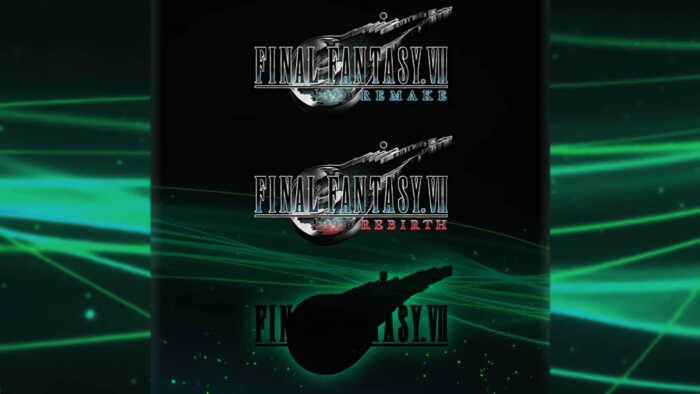
By giving fans a way to access both older and new stories from Final Fantasy VII, the development team seems to be sincere about trying to bring as much depth and creativity to their remake trilogy as possible. Of course, Ever Crisis does provide a way for developers to tell more stories from the Cetra during events, as well as more side content. Even Sephiroth’s backstory, which was a suggested inclusion by Nomura has the possibility to add more depth to the Remake trilogy. 14 More of how Ever Crisis could influence the trilogy will be discussed in the section on Sephiroth. For now, it is time to consider how Rebirth adds to the legacy of Final Fantasy VII by looking at how it differs from both the original and Remake. As mentioned at the beginning of this article, there will be spoilers contained below.
Final Fantasy VII Rebirth
Shortly after its reveal, Final Fantasy VII Rebirth was announced to release on February 29, 2024. There are marked differences between Remake and Rebirth, most of which are explained in the sections below. However, one of the improvements over Remake had to do with the gameplay. In addition to this, Rebirth had a heavier emphasis on open world exploration and story. Rather than end after the main impetus for leaving Midgar and saving the Planet, as in Remake, the developers chose to end Rebirth at the iconic scene of Aerith praying in the City of the Ancients, though there are a few changes in how the events play out from the original. 15 More of the specific detail on these events and changes are discussed in the following sections.
Carrying On from Remake
As established earlier, Final Fantasy VII‘s story throughout the remake trilogy needed to be different if the developers wanted to create something that would catch fans’ notice. 16 One of the ways these differences happened in Remake was to introduce the Whispers, who acted as arbiters of fate. At the end of Remake, the crew of Cloud, Aerith, Tifa, and Barret, with Red XIII being present, destroyed the Harbinger of Fate and a version of Sephiroth, leaving Cloud with seven seconds to make changes from the edge of creation, though a more literal translation has Sephiroth saying “We can still make it in time. The future is up to you, Cloud”. This action leaves fate unclear, which is where the story of Rebirth picks up.
Specifically, Rebirth opens with the crew who fought the Harbinger of Fate dead or comatose with Zack Fair entering Midgar with Cloud. From here, it is obvious that there are going to be more differences in Rebirth than there were Remake. Even the familiar moments, like Cloud recounting the incident at Nibelheim are shown in a more grim and overt way. Some of the minutia of these differences will be covered below. For now, it is clear that the developers have been weaving in the creativity and depth into the second part of their trilogy, like they mentioned.
Major Plot Changes
As mentioned in the paragraph above, Rebirth has major plot changes from the original Final Fantasy VII. While Cloud’s origins as a SOLDIER were hinted at in the original game, with a mention of Zack Fair, using the events of Crisis Core at the end of Remake and at the start of Rebirth adds depth to the character and his connection with Aerith and Cloud. This connection is more overtly stated in the Gongaga portion of Rebirth, which is where Zack’s hometown is.
Gongaga briefly featured in the original Final Fantasy VII, and seeing it better fleshed out in Rebirth added a note of bittersweet to the overall story. Aerith goes searching for news of Zack, and Cloud becomes upset with her when she asks him if he ever knew Zack. In the original ending of Crisis Core, it is revealed that Zack bequeathed Cloud his Buster Sword, which was given to Zack by Angeal and marks the legacy of a person who embraces their dreams with their honor as a SOLDIER. Because the original game released before Crisis Core, this sentiment was not present in the original game as strongly. For now, it is time to discuss how Zack and his role in Rebirth influences this idea of legacy and the story moving into the third game.
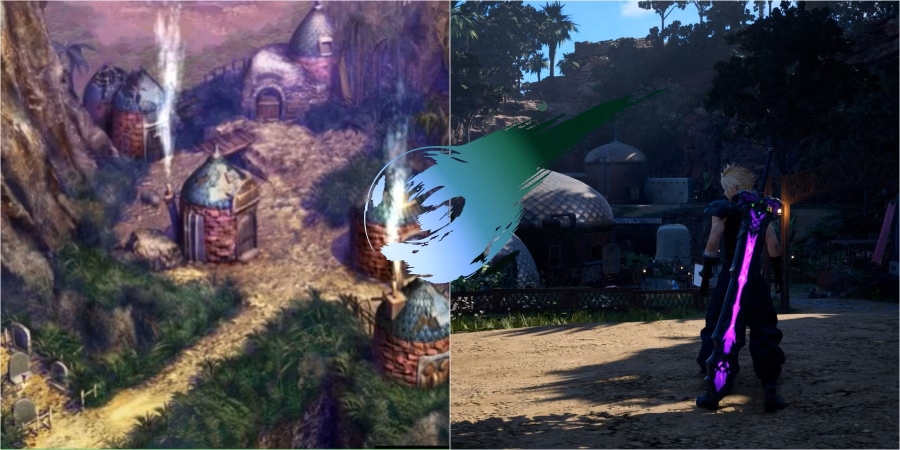
Zack and His Role
Most of Zack’s role in Rebirth is to serve as interludes between the action-packed sections of Cloud and crew. In these interludes, Zack tries to figure out why his version of Cloud and Aerith are seemingly comatose. He takes residence with Elmyra, Aerith’s adoptive mother, and is shocked to discover that the world is dying. This culminates in Zack jumping through multiverses to try and reach Aerith and Cloud.
Being the hero who might show up in the end is not Zack’s only role in Rebirth. He is also aware that he should have died in the fight against Shinra. On top of this, Zack spends his time encouraging Cloud, which allows both versions of Cloud to remember who he is at critical points of the story.
Zack does manage to change multiverses enough to team up with Cloud at the edge of creation once more to fend off Sephiroth. He provides clarity against Sephiroth’s manipulations towards Cloud, and this allows Cloud to easily fight back against the uncertainty he’s been facing throughout the entire game. More on this will be covered below, where the changes with Cloud’s character are discussed.
Finally, Zack provides the motivation Cloud needs to defend Aerith, by asking him to “Save her” before he is ultimately separated across multiverses once more. He is left at the end of the game in a version of Midgar’s Church wondering if the multiverse cannot be joined again. This adds a level of mystery for seasoned Final Fantasy VII fans and adds some fresh possibilities for the third game as well.
Changes with Cloud
One character who displays the most changes in Remake and Rebirth is Cloud Strife. In Remake, he is more reserved, whereas in the original game, this reservation came across as more emotionless and detached. In both parts of the remake trilogy, Cloud is shown to openly crack jokes with Tifa, Aerith, and even Barret. He is more open and caring, until Jenova is involved in the form of Sephiroth, which makes him begin to doubt his memories and Tifa’s existence in Rebirth. This change in Cloud makes it easier for players to sympathize with his struggles.
Cloud’s relationships with Tifa and Aerith are more nuanced than the original game as well. It is a bit more clear that he has conflicted feelings surrounding both Tifa and Aerith, but for different reasons. He has always liked Tifa, but becomes shy and reluctant to admit it. As for Aerith, it is clear he cares about her in some capacity, but is worried that Aerith might still have feelings for Zack. While his attraction for Tifa is blatantly obvious, if a player views the intimate variant of the Gold Saucer scene, it becomes clear that Aerith and Cloud do also have some level of affection for each other, though it is new and difficult to act on. This relationship complexity is highlighted in the opening of Rebirth when Tifa is worried about Cloud’s safety, when Aerith exclaims that they were kind of on a date. All three are reprimanded by Barret for goofing off when the fate of the world is at stake during their escape from Kalm.
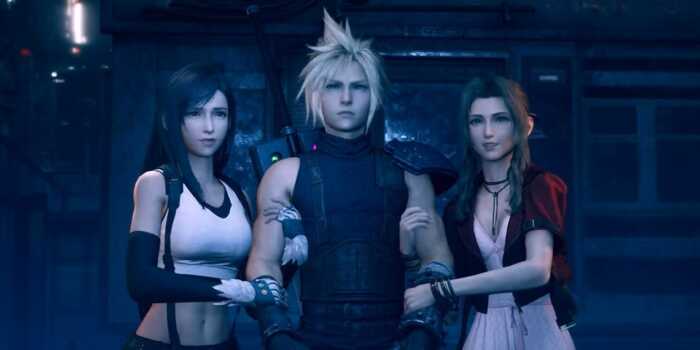
Furthermore, Cloud’s relationships with Red XIII, Yuffie, and Barret are more clearly defined. He can advise Red, handle Yuffie’s energy, albeit with some annoyance, and banter with Barret. Again, in the original version of Final Fantasy VII, a lot of this tone was missing, because it was difficult to read between the lines of Cloud’s words and their intended tone. The nuance added to Cloud and how he navigates his relationships with others provides more clarity on just how much he has to lose if they fail. In addition to this, it brings out more of how he might begin to embrace his own dreams as the wielder of the Buster Sword. However, there are more changes to Cloud that add even more depth to the Remake trilogy’s two parts.
For example, Cloud’s trauma from his time as a security guard for SOLDIER is much more evident in Remake and Rebirth. In Remake, when Cloud starts to be triggered by the fires in Midgar, static takes over his hearing, and he has difficulty walking. Sephiroth also makes an appearance during this time, which is a theme that is repeated throughout Rebirth. As for how Cloud’s trauma in the second game, players begin to realize that the severity of his trauma, especially when mixed with Jenova and Sephiroth’s influence, makes him an unreliable narrator in his own story. Having this clear indication of what is happening with Cloud explains why he begins interactions with others as more reserved and also provides context to his internal struggles, something which was kind of confusing to follow in the original game.
Cloud’s betrayals also hit harder in Rebirth. When in the presence of too much mako, Sephiroth actually gains control over Cloud, attacking Tifa and shoving her into a pool of mako. Cloud’s demeanor throughout this scene is completely detached and emotionless, until he struggles for control of himself again. This new betrayal on Cloud’s part, as it was not present in the original game, provides needed context for what happens at the Temple of the Ancients, where, despite his resistance, he ends up giving Sephiroth the Black Materia. This betrayal is resolved when he manages to reach Aerith in time and fend off Sephiroth’s attack. However, the multiverse seems to be showing multiple events of Aerith’s future at that moment. This moment will be discussed further when going over how Aerith has changed from the original game. For now, Cloud leaves the encounter being able to see Aerith as well as a crack of light in the sky, which indicates he is aware of the multiverse.
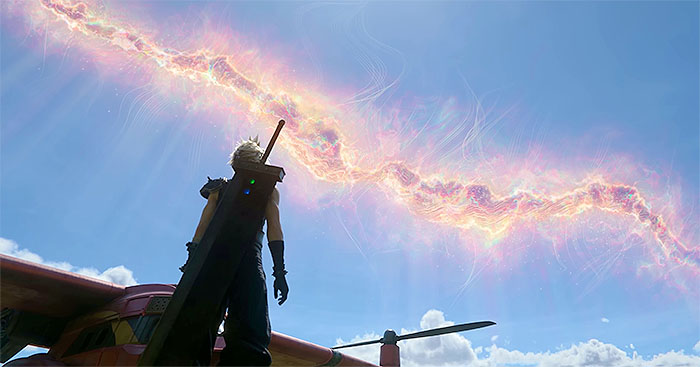
Cloud having both the Black Materia and the Clear Materia at the end of Rebirth opens up some possibilities for the third game. Of course, moving into the third act of the original game, Cloud initially is compulsed to use the Black Materia to revive Sephiroth in the Northern Crater. While this event will likely still happen, since the directors want to make sure all the main events are told in this story, the question becomes how this will happen. The role that Cloud plays in all the events of the game is clearer in that he opposes Sephiroth and is coming into his own faster, but, the choices he makes along the way are more left up to him, rather than him being directed by Jenova quite as much. Because it has been shown that Cloud is starting to piece together his memories faster, this leaves room for him to make a different choice or two along the way. His determination and clarity when he was fighting Sephiroth alongside Zack is a potential hint to this, and it is likely that he could, if given the chance, do something unexpected that changes everything by the end of the third game. For now, it is time to examine what Tifa’s role is in Remake and Rebirth.
Tifa Keeping Cloud Grounded
From the beginning of Remake, it is clear that Tifa keeps everyone encouraged in her own way. While she is not the type to be chipper or too overtly upbeat, Tifa is assured of herself, confident in her choices, and is a calming and steady presence. This is particularly noticeable with her interactions with Cloud. However, one main difference between her character in Remake and Rebirth is that she is openly friendly with Aerith, seeming to want to help her come out of her shell more, and Tifa likes to tease Cloud with Aerith involved. In the original game, it was easier to interpret the two as rivals interested in the same man. So, this change was nice to see and makes the group more cohesive.
Tifa’s fighting style is more dynamic than how it was portrayed in the original game. It is clear that she has a dedicated training regimen that she sticks to, even when she is trying to save the world. This dedication also helps Tifa not only build a reputation for herself as the bartender and owner of Seventh Heaven in the Sector 7 Slums, but it also allows her to recognize, after losing everything she built in Midgar because of Shinra destroying that sector in retaliation to AVALANCHE’s actions, that she can rebuild.
This strength of character was outlined in the Final Fantasy VII Remake novel Traces of Two Pasts, where it is revealed that the aftermath of the Nibelheim incident left her lucky to be alive. Tifa had to rebuild herself in a new environment that was the slums of Midgar and adapt to those rules from the age of fifteen. 21 This is highlighted in Rebirth a couple of times. Once, at the beginning of the game, Tifa allows herself to be vulnerable and shows Cloud her scar, and then again when the group goes to Corel and finds a clinic where the doctor who operated on her still works. Bringing these moments into Rebirth takes the strong, independent archetype that Tifa fulfilled in the original game and allows room for the why behind that personality. Tifa is also softer with her emotions in some ways, which makes her a more dynamic character in Rebirth as well.
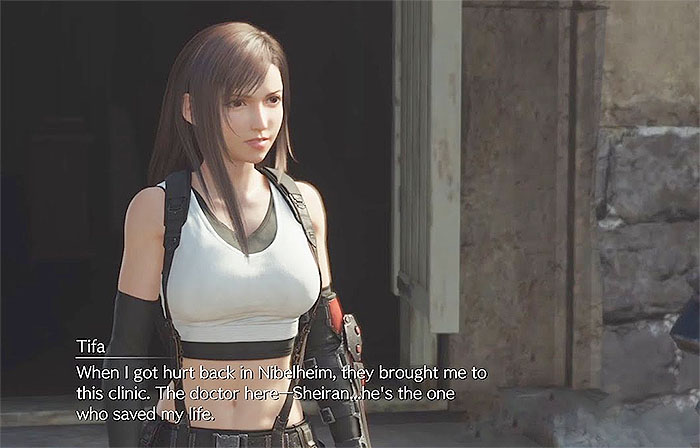
Tifa also feels like a secondary main character, rather than a side character in Rebirth. She takes charge of the party when it splits on two separate occasions. On one of these occasions, Tifa is thrown into the Lifestream by Cloud, and she discovers some of her forgotten memories while she is trapped in one of the Weapons. After that moment, Tifa starts working, slowly, on getting Cloud to realize that maybe his memories are not exactly his. Tifa is more aware of Cloud’s struggles and fights to keep him grounded, often by taking his hand or trying to break him out of his triggered state. When Cloud mentions that he sees Aerith after his fight with Sephiroth, she sadly looks away and tells him that she’s not there. For the third game, it is possible that Tifa will be the force that keeps everyone grounded and focused on what is needed.
Aerith’s Role
Aerith in Remake is something of a catalyst. She is the person who Shinra wants, and keeping her free from them is what really causes Cloud and the others to start fighting the Whispers. She is openly curious about the world, but in a way that does not come across as naïve as she did in the original game. While she struggles a bit with knowing her fate in Remake, only to forget crucial pieces of that fate in Rebirth, she values the small moments on her journey. Aerith also seems to be holding everyone together in a way. While Tifa achieves this by being decisive and steering the group toward an outcome, Aerith does so more subtly. She uses her cheerfulness to keep Cloud from giving into his darker, more confusing thoughts, and she laughs with Tifa and talks about Zack with her. She is the first to see the humor or bright side of an otherwise bleak situation.
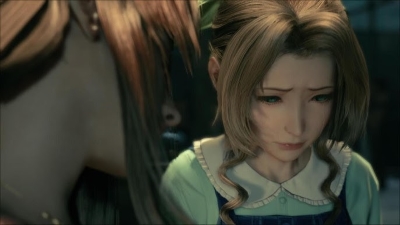
In Traces of Two Pasts, it is revealed that Aerith was present for much of the experimentation done on her mother Ilfana. She makes it to Midgar because of a scientist’s help, but stops at the Sector 4 train station and tries to find a doctor for her mother. This ultimately fails, and she is adopted by Elmyra, where she is kept safe in Sector 5 until she is brought into the events of Remake. 22 In Rebirth, this is a scene that players are forced to play through, along with other character’s most horrific or challenging moments, within the recreation of the Clock Room in the Temple of the Ancients. Compared to the original game, where the details of Aerith’s parents and past were left in an optional section of the game after a mandatory snowboarding section towards the end of the game, this view of Aerith is more complete and able to be empathized with, which leads us into how Aerith’s journey ends in Rebirth next.
Schrödinger’s Aerith is how one might define the final moments of Rebirth. While she actively takes part in her fate in both the Remake and Rebirth, Aerith seems more resigned to her fate in the original Final Fantasy VII. Activating Holy seems like the one final thing she can do in order to give the world, or her friends, a fighting chance. In Rebirth, the scene of Aerith’s possible death is disorienting. One moment, Cloud is able to stop Sephiroth’s blade from harming her, only for him to be holding her wounded, but still alive, to him grieving over her death. This disorientation continues throughout much of the game’s final encounter with Sephiroth, when, finally, Cloud arrives in a white void and has Aerith fighting Sephiroth next to him. After this encounter, Cloud urges Aerith to wake up, only to see his friends grieving their loss a moment later.
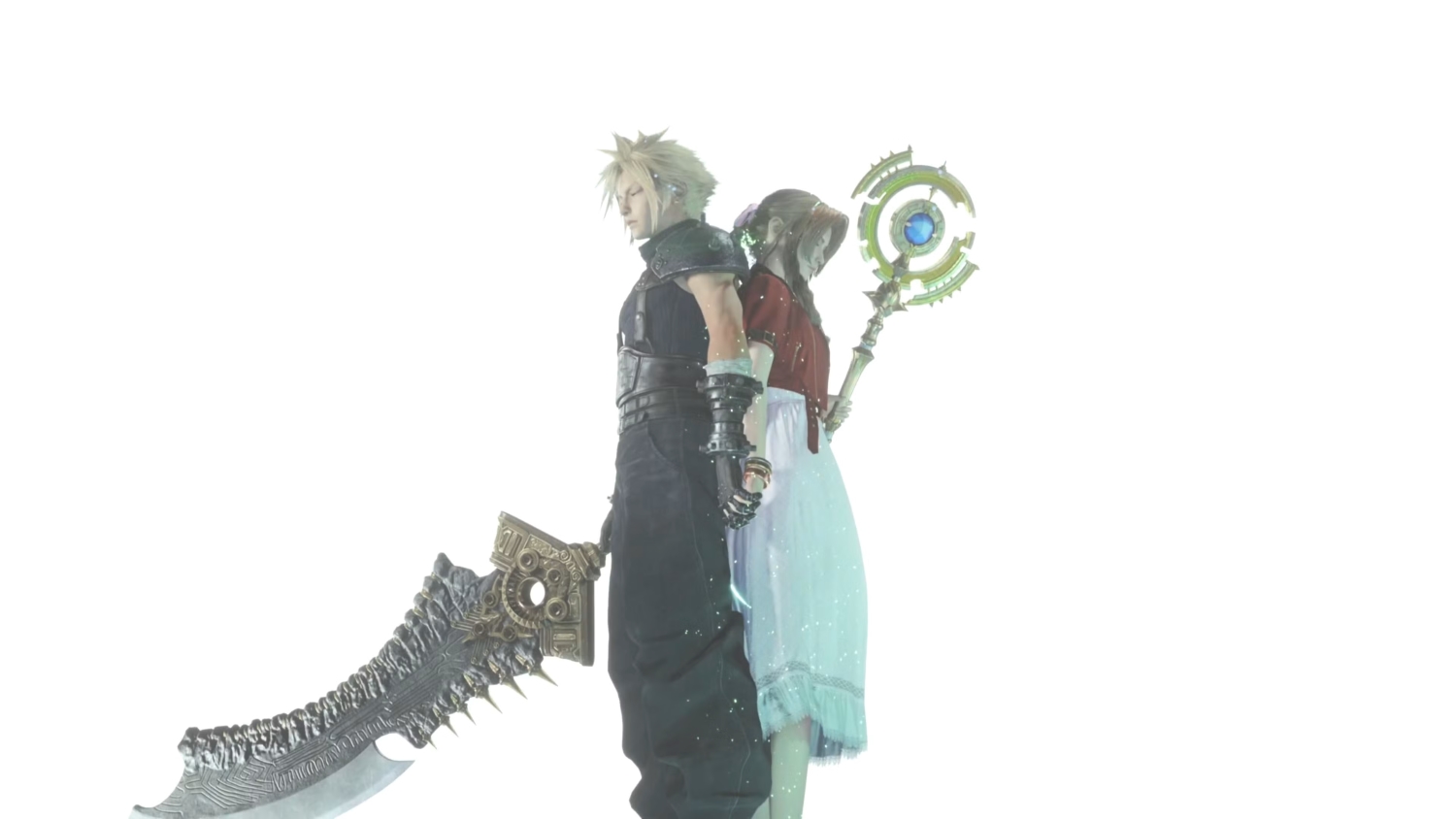
The rest of this moment, which describes the end of the game, has been detailed in Cloud’s section of the article, and this portrayal of Aerith’s death led many of the fans to question what was happening. Compared to the original game’s suddenness of the loss, this moment felt more impactful in a way, and that was very much by design. The developers of Rebirth acknowledged that the loss of Aerith was sudden in the original, but they wanted this version to be more disorienting and show the unreal nature of losing someone in this part of the remake trilogy. 23 For now, it is time to move onto how party interactions as a whole give a varied feeling to the remake trilogy.
Party Interactions as a Whole
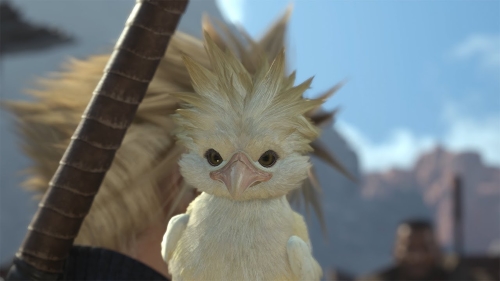
There is more humor among the group in the remake trilogy. While the original game had some moments of levity, it was a constant reminder that Sephiroth was creating as much destruction as possible, or the threat of the Planet’s end was nigh. Combined with Cloud’s hard to read emotions, this made the original game feel somewhat dry. While there were moments of joy, sadness, grief, and loss that punctuated the original, the two parts of the remake trilogy have balanced these feelings out with humor, uncertainty, and romance, or at least romantic tension. These feelings add a bit of room for the good moments in life, despite the circumstances.
Following that, there is more nuance with how affection is displayed in terms of Cloud, Tifa, and Aerith. While the developers have since come out and said that Aerith is supposed to be a more sisterly expression of love, that statement was quickly followed by how Cloud was lucky to have two women care about him. 24 This sisterly expression of love was recently rebuffed by the director, stating instead that the player should be able to interpret who Cloud cares for on their own, based on their own feeling about the content presented to them in the game. 25
While it is clear that Cloud feels something about Aerith, he is uncertain about it, which is a departure from how this was approached in the original game. On the other hand, Cloud and Tifa’s relationship has clearly grown into something more romantic out of a childhood admiration. While Remake, and more likely, Rebirth, has stoked the fires of the shipping war among these characters once more, the voice actress for Aerith has suggested that people are free to interpret this dynamic how they wish and urges others to simply “Be nice!” about it. 26
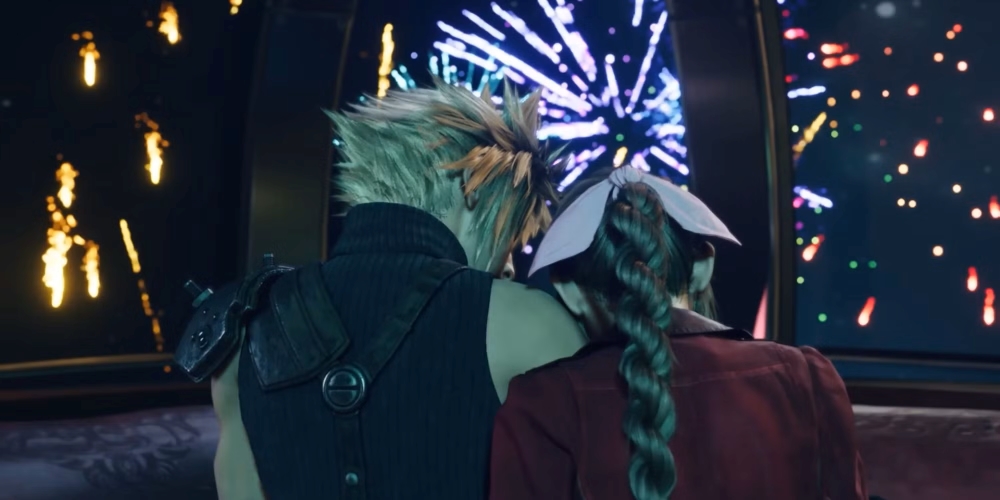
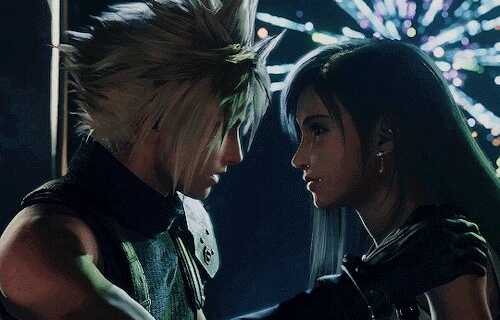
Everything feels more important in Remake and Rebirth. The slums of Midgar feel more lively than the original game. Moments of tension are heightened by having knowledge of what happened in the original iteration of Final Fantasy VII or other moments in the Compilation and wondering how Remake and Rebirth will tell those familiar moments in a new way. 27 Part of this has to do with being able to tell that everyone in the group is reacting to the situation in different ways. However, part of it was also by design, as the developers of the ongoing trilogy did not want to simply hit all the same story beats in the same way. Rather, they wanted to give players something they could be excited about, even if they had played the original Final Fantasy VII many times. 28
Everyone feels the loss and strain and pain of saving the Planet in the remake trilogy. In the original game, it seemed to be more of a given that the group would succeed despite the odds, because, losing would not be fun. However, in Remake and Rebirth, it is clear that everyone in the party is grappling with how they should save the Planet. Clearly, they know they have no choice but to save their home, and they defy fate to do so, but, in the aftermath of that choice, it still comes down to the question of if they can do what they have set out to do. There are moments where Tifa’s certainty wavers, the pain that Aerith feels from the Planet takes its toll, Cloud’s identity in himself is called into question, and other moments that play off each other to create a more complex, dynamic story that gives the feeling of the toll it would take on some well-meaning people to not just survive in a dying world, but save that world from its fate. Now that the way party interactions as a whole have been examined, it is time to consider whether one of the main antagonists has been given the treatment of nuance in this remake trilogy.
Sephiroth — Is it Him?
Jenova potentially taking the form of Sephiroth to achieve its own ends is much more evident than it was in the original game. For example, in the opening of Rebirth with the Nibelheim Incident, Sephiroth clearly transitions from someone who cares for his men, is angered by Hojo’s experiments, and seems to not want to disturb the village or attract more attention by moving fluidly and gracefully, especially when scaling the mountain, to more inhuman and stilted movements while he massacres the village. Furthermore, Sephiroth seems to only be able to appear from groups of remnants, particularly in front of Cloud, then later in front of some of the others. However, in the original game, Sephiroth was presented as a person who was driven to madness and saw the world’s destruction as the only way to bring about some twisted version of peace.
Another change between the remakes and the original is that Sephiroth seems to want something other than world destruction this time. He initially tried to make the events of Remake remain the same, if not accelerate the events of the original by trying to use the Whispers to his advantage. Then, in Rebirth, Sephiroth can be seen traversing different realities in search of Aerith so that she can meet her fated end. Despite these actions, it is possible that Sephiroth’s intentions may not be exactly what they seem, which is examined next.
For example, Sephiroth could be working to overthrow Jenova or a larger threat. At the end of Remake, he asks Cloud to defy destiny with him, then says that seven seconds might be enough for Cloud to make a change. In Rebirth, his presence in the Church in Zack’s universe allows Zack to figure out that Aerith needs to be saved. Furthermore, it is Sephiroth who causes Zack to move into the Edge of Creation with Cloud at the end of Rebirth, and gives him the idea to try and rejoin the others in their reality. However, this action could have been taken by Sephiroth as a way to torment them, knowing that he would win in the end.
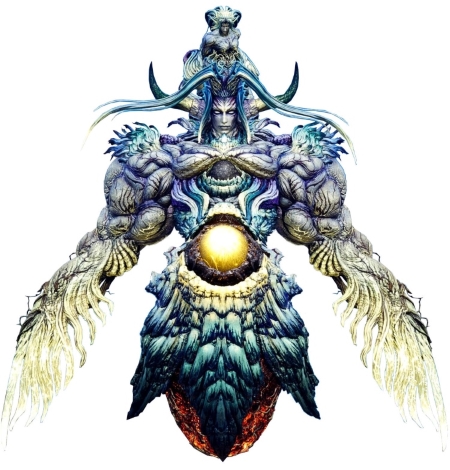
One final difference between the original and the remake trilogy is that the end of Rebirth has Cloud and his team fighting Bizarro Sephiroth, now called Sephiroth Reborn, which leads to question as to how Sephiroth might appear in the final part of the trilogy. Since the same story beats are being covered, as mentioned earlier, one could likely expect Safer Sephiroth to appear. However, it will be interesting to see if Sephiroth’s motives or intentions take a different approach from the original. For now, the possibilities for redemption that the remake trilogy opens up through honoring the legacy of the original Compilation will be examined in the next section.
Opening Up Possibilities for Redemption
Drawing on Ever Crisis a bit, pre-Crisis Core, original game, Remake, or Rebirth, Sephiroth’s debut in The First SOLDIER shows that he’s thought to be Shinra’s golden boy by other team members. However, Sephiroth opened up with Glenn and the others in P0, explaining that he has been looking for his mother and that his view in the public’s eye as a hero has been meticulously manufactured. Over time, Sephiroth learns to think for himself, and acquiesces someone who he should view as an enemy’s request, though this action seen out of context by his team gets him called a monster and causes the loss of his locket with his mother’s picture in it to the Lifestream.
A short time later, Sephiroth meets Angeal, who is sixteen and a year older than him, meaning that Sephiroth is fifteen, and reacts to him coldly. However, while on a mission, Sephiroth decides to try bonding with Angeal and his fellow SOLDIERs once more. Also, he keeps having dreams of a loving and approving mother, who takes trips with him to get him out of the life in the manor and missions that he knows. He seems to be at odds with Hojo, who very much treats him like a test subject, and seems to disapprove of what Shinra is doing in general, since he actively keeps knowledge of deserters a secret from the company in a flashforward. These actions, when combined with how he acts in Crisis Core, where he shows concern and grief over the loss of his friends and a desire to treat the troops under him with dignity, prior to Nibelheim, give Sephiroth a chance to be redeemed in some way within the remake trilogy. Next, the ways that Cloud can be redeemed from his missteps in Rebirth are discussed.
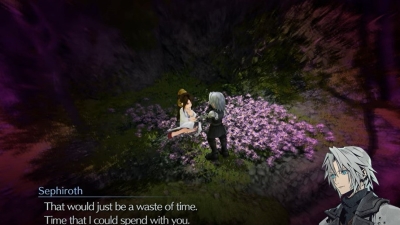
Cloud seeing the multiverse and maybe being in a different world line himself, possibly, or, knowing Aerith is somewhere in the multiverse allows an avenue for processing his failure. Will he actually save Aerith and Zack and the cost of potentially doing so is a question that remains to be answered in the final part of the trilogy. In addition to this, Cloud is confronting his trauma faster; he remembers Zack and finds the room in the Shinra mansion where he was experimented on, which has started to force him to question which memories are accurate.
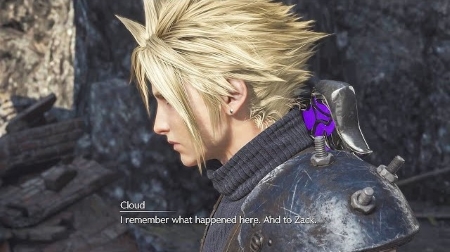
Furthermore, Cloud has a better sense of himself, especially when he meets Zack again at the end of Rebirth. Despite this, Cloud storing the Black and Clear Materia in his sword leads the player to question how much Cloud may still be susceptible to Sephiroth’s or Jenova’s control. Because another betrayal could be in Cloud’s future in the final part of the series, it would make sense if the way that Cloud is redeemed as a character plays out differently than it did in the original game, which could heighten the comparisons one can make between Sephiroth and Cloud. Now that the history of the original Final Fantasy VII and its compilation have been outlined, the developers intentions of creating a remake trilogy for the original compilation has been established, and the major similarities and differences, along with future possibilities for the third installment have been discussed, it is time to move onto the conclusion.
How to Bring New Life to a Legacy
While the original Final Fantasy VII and its side content created answers for questions people had in the original game, the Remake has the ability, as stated earlier, to tie all that information together in a cohesive way that maintains if not heightens the emotional tension from the original. The Remake trilogy also allows there to be subtle nods to the fact that this could be a potential sequel of sorts to the original in some ways as well. Furthermore, it allows the themes and characters continue into the modern day while still allowing enjoyment to be found in the original game. In this way, Final Fantasy VII Remake‘s trilogy honors where it came from while demanding its legacy continue in nostalgic, but nuanced ways.
Works Cited
- Final Fantasy. (2020, February 3). Wikipedia. https://en.wikipedia.org/wiki/Final_Fantasy ↩
- Wikipedia Contributors. (2025, January 7). Characters of the Final Fantasy VII series. Wikipedia; Wikimedia Foundation. https://en.wikipedia.org/wiki/Characters_of_the_Final_Fantasy_VII_series
↩ - Wikipedia Contributors. (2024, September 26). Compilation of Final Fantasy VII. Wikipedia; Wikimedia Foundation. https://en.wikipedia.org/wiki/Compilation_of_Final_Fantasy_VII ↩
- slk_23. (2021, October 5). For how many years had fans been waiting for Final Fantasy VII Remake? Gamespot.com; GameFAQs. https://gamefaqs.gamespot.com/boards/168653-final-fantasy-vii-remake/79693944 ↩
- Final Fantasy VII Remake. (n.d.). Final Fantasy Wiki. https://finalfantasy.fandom.com/wiki/Final_Fantasy_VII_Remake ↩
- convolutionsimp. (2024). Interview with Hamaguchi, Nomura, Kitase (translated) [Online forum post]. Reddit. https://www.reddit.com/r/FFVIIRemake/comments/16odskq/interview_with_hamaguchi_nomura_kitase_translated/?rdt=48348 ↩
- Contributers. (2020). Final Fantasy VII Remake development. Final Fantasy Wiki; Fandom, Inc. https://finalfantasy.fandom.com/wiki/Final_Fantasy_VII_Remake_development ↩
- L., V. (2024). Gamerbraves.com. https://www.gamerbraves.com/tgs2023-final-fantasy-vii-rebirth-director-naoki-hamaguchi-tetsuya-nomura-producer-yoshinori-kitase-says-that-synergy-battle-system-came-from-wanting-players-feel-closer-to-their-party-members-in-i/ ↩
- King, J. (2021, July 6). Final Fantasy 7 Remake Interview: Yoshinori Kitase, Naoki Hamaguchi, and Motomu Toriyama On Recreating A Classic. TheGamer. https://www.thegamer.com/final-fantasy-7-remake-interview/. ↩
- aitaikimochi. (2024). X (Formerly Twitter). https://x.com/aitaikimochi/status/1334485034468691970 ↩
- Scullion, C. (2022, July 8). Final Fantasy 7 Remake could have been in two parts, rather than a trilogy. VGC; Video Games Chronicle. https://www.videogameschronicle.com/news/final-fantasy-7-remake-could-have-been-in-two-parts-rather-than-a-trilogy/ ↩
- Heaney, D. (2021). Everything revealed in the FINAL FANTASY VII 25th ANNIVERSARY CELEBRATION stream | square enix blog. Square-Enix-Games.com. https://www.square-enix-games.com/en_US/news/final-fantasy-vii-25th-celebration ↩
- Nuñez, P.D. (2022). The Future Of The Final Fantasy VII Remake Series Has Been Revealed. Mxdwn games. https://games.mxdwn.com/news/the-future-of-the-final-fantasy-vii-remake-series-has-been-revealed/ ↩
- Heaney, D. (2021). SQUARE ENIX | The Official SQUARE ENIX Website – Tagged. Square-Enix-Games.com. https://www.square-enix-games.com/en_US/tagged/products%3AFINAL%20FANTASY%20VII%20EVER%20CRISIS ↩
- Wikipedia Contributors. (2024, October 5). Final Fantasy VII Rebirth. Wikipedia; Wikimedia Foundation. https://en.wikipedia.org/wiki/Final_Fantasy_VII_Rebirth ↩
- Nightingale, E. (2023, February 6). Final Fantasy 7 Remake producer says story changes were necessary to keep people’s interest. Eurogamer.net. https://www.eurogamer.net/final-fantasy-7-remake-producer-says-story-changes-were-necessary-to-keep-peoples-interest ↩
- Luzbel. (2020, April 14). Final Fantasy VII Remake: Ending [LITERAL TRANSLATION]. YouTube. https://www.youtube.com/watch?v=KbM0Gi5SKTc ↩
- Swan, C. (2024, March 9). How Final Fantasy 7 Rebirth’s Gongaga Compares to the 1997 Original. Game Rant. https://gamerant.com/final-fantasy-7-rebirth-gongaga-1997-og-compared/ ↩
- Indyrael. (2024, March 8). FINAL FANTASY VII REBIRTH – Zack & Biggs Chat About Avalanche – Performance Mode. YouTube. https://www.youtube.com/watch?v=_Cw3oKmGDEw ↩
- Render, J. (2023, June 12). FF7 Rebirth Trailer Hints at a Major Sephiroth & Tifa Change. CBR. https://www.cbr.com/ff7-rebirth-trailer-sephiroth-tifa-change/ ↩
- Nojima, K. (2023). Final fantasy VII remake: Traces of two pasts. National Geographic Books. ↩
- Nojima, K. (2023). Final fantasy VII remake: Traces of two pasts. National Geographic Books. ↩
- Kivel, K., & Taormina, A. (2024, December 15). Final fantasy 7 devs talk accolade, PC release, and part three. Gamerant.com. https://gamerant.com/final-fantasy-7-rebirth-game-awards-interview/ ↩
- Madsen, H. (2024, December 18). “Final fantasy 7 rebirth” director weighs in on cloud’s love triangle. Inverse. https://www.inverse.com/gaming/final-fantasy-7-rebirth-game-awards-interview-aerith ↩
- Kawase, A. (2025, January 23). Cloud and Aerith are not like brother and sister, Final Fantasy VII Rebirth’s director speaks out about mi … AUTOMATON WEST. https://automaton-media.com/en/news/cloud-and-aerith-are-not-like-brother-and-sister-final-fantasy-vii-rebirths-director-speaks-out-about-misinterpretation-of-his-statement/ ↩
- Colwander, M. (2024, December 20). Aerith wants final fantasy 7 shippers to “touch noses” & stop fighting. CBR. https://www.cbr.com/aerith-va-briana-white-ff7-shippers-stop-fighting/ ↩
- Bailey, K. (2024, March). Final fantasy 7 rebirth’s director talks about creating its anticipated ending and teases part 3 – IGN. IGN. https://www.ign.com/articles/final-fantasy-7-rebirths-director-naoki-hamaguchi-interview-ending-part-3 ↩
- Parkin, S. (2025). The making of final fantasy 7 rebirth: “I thought: If we just reproduce the original game with no changes, it will feel nostalgic, but not exciting.” Gamesradar; GamesRadar+. https://www.gamesradar.com/games/rpg/the-making-of-final-fantasy-7-rebirth-i-thought-if-we-just-reproduce-the-original-game-with-no-changes-it-will-feel-nostalgic-but-not-exciting/ ↩
What do you think? Leave a comment.
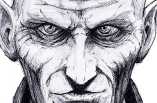
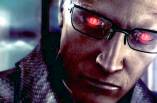
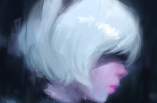
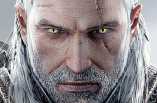
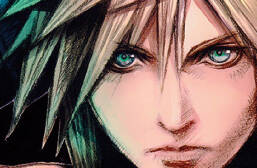
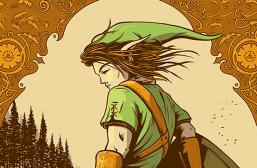
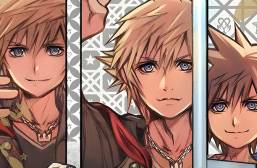
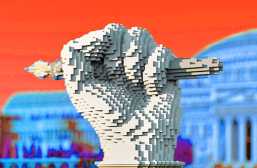
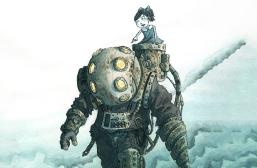

As someone who was never a FF girlie, I love seeing the passion from fans of the series even if I can’t get into it myself. That said I think this exploration of the subseries remake was so thorough I might need to go ahead and add it to my backlog.
I will say as someone who loves what the original did, especially in the context of when it came out, the Remake series has really found original ways for me to not only feel nostalgic for the original, but also has kept me guessing for what’s going to happen next, even if I already know the broad strokes of the story, so, I really would recommend checking it out. The battle system is fairly fast-paced and updated for more modern tastes, too.
As far I’m concerned, Square-Enix pulled off the impossible with Rebirth!
I don’t mind the changes, the multiple timelines, the ambiguous ending, it’s all what they set us up to expect with the ending of Part 1.
For me the only problem was the Aerith death scene. It’s one of if not THE most iconic moments in JRPG history. They didn’t have the right to fuck it up the way they did. They should’ve shown it exactly as it’s supposed to be first. Then maybe later we could flashback and show Cloud seeing it another way where she doesn’t die, but the audience deserved to see a clean recreation of it first.
I wonder how many people are waiting for the full game to be released, I want to get immersed and play the whole thing at once, I hope a delay for my purchase does not ruin the development of the third part!
I Remember getting a PS1 for Christmas with FF7. Might have been the happiest moment of my life (Probably still in the top 10). Playing the first remake was like hooking up a Nostalgia IV Drip directly into my veins. Just hearing that Epic music takes me back to a simpler time before the world basically went progressively more to Shit in the 21st century.
I doubt i devoted more time to any game ever (Except maybe Champ Man 01/02 but that’s a given for everyone right). Nostalgia money grab? Sure. But God damn is Sephiroth cool.
I genuinely wish I liked RPG’s, they look amazing but the turn based combat and all it’s complexities bores me…do I simply approach them the wrong way?
I really believe that Square are shooting themselves in the face every time they enter into an exclusivity contract with Sony for these remake episodes of the game that pretty much defined the pop culture that surrounds this industry.
Exclusivity is not now, nor ever was, a good thing for third party companies. It is a naked marketing exercise in “Yah, Boo, Suck It”, that detracts and stultifies the growth of the market.
Before any of the PS fanboys start their current garbage about Mirosoft and their acquisition of ZOS and Activision, it should be made clear that a company owned by a console manufacturer is not third party, so exclusivity for those game; and Sony have a lot of exclusives, is not what I am complaining about. Though, for the record, I think that Microsoft acquiring those developers is not something to be proud of, as the ZOS one paerticularly, has closed off a signifcant part of gaming revenue by foregoing PS.
I loved the crude, blocky heroes of the original. They gave the game a unique sense of style.
FF7 is one of the most lionised games of all time for the storyline first, the world and characters second, and the gameplay third – with everything balanced nicely.